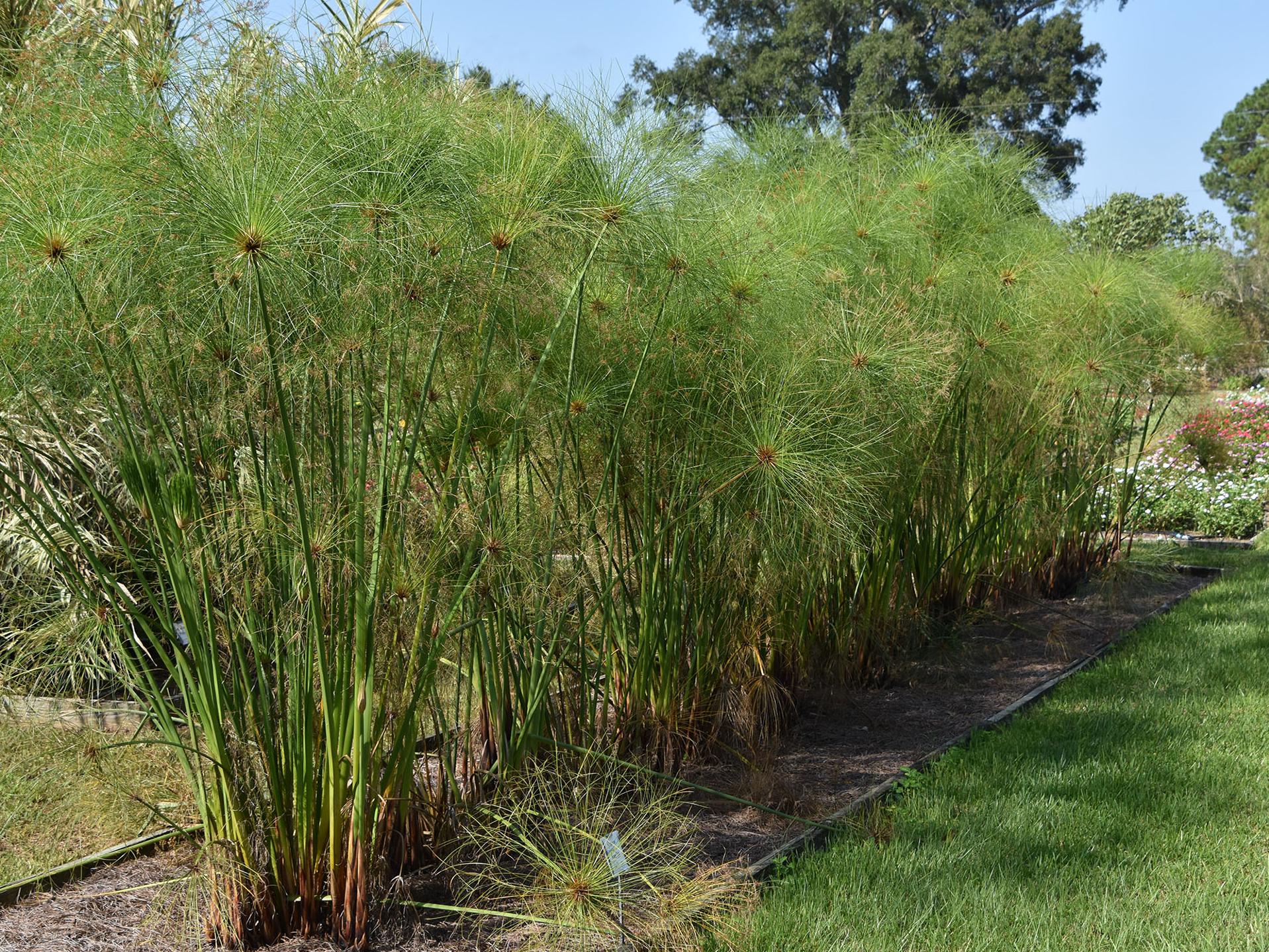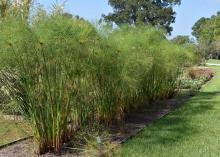Information Possibly Outdated
The information presented on this page was originally released on October 10, 2016. It may not be outdated, but please search our site for more current information. If you plan to quote or reference this information in a publication, please check with the Extension specialist or author before proceeding.
Ancient papyrus performs in Mississippi gardens
At the 43rd annual Ornamental Field Day this weekend at the South Mississippi Branch Experiment Station in Poplarville, one plant that drew a lot of attention was the exotic-looking King Tut papyrus.
This grass-like plant growing in Mississippi State University's trial garden can easily grow to 6 feet tall, and it has a striking presence in the landscape. King Tut is a member of the same papyrus family of plants that the ancient Egyptians used to make paper. Its dramatic appearance makes for a great conversation about its connection to the distant past.
If you have a small growing space, then King Tut may just be too big. But if you want that exotic look in your landscape, there are other, smaller options among the papyrus varieties.
Prince Tut is a fun plant and will not overwhelm a smaller space. I grow Prince Tut in my landscape in a large terra cotta container. I find it is perfect for displaying the 3-foot plant. There is also an even smaller papyrus choice called Baby Tut, which stands less than 2 feet tall and would be fantastic in a container on the porch or patio.
All three papyrus selections feature triangular green stems topped by an umbrella-like inflorescence made of hundreds of thread-like rays. The flower clusters appear at the ends of these rays.
Papyrus plants love to be planted where the root ball stays really moist, like along the edge of a pond or in a rain garden. A neat idea is to plant your papyrus in a container with the bottom holes plugged, keeping the root ball wet and happy.
King Tut, Prince Tut and Baby Tut also do well when planted in normal landscape beds. It is best to keep the soil moist, but once established, these plants are surprisingly tolerant of dry conditions.
Papyrus plants generally don’t handle extended freezing temperatures very well. You can consider these papyrus varieties perennials in areas where winter temperatures remain above 35 degrees. Further north, in Mississippi zones 8 and 9, papyrus usually dies back to the ground in cold weather and returns the next year.
Even in zone 7, regrowth can occur, especially if the plant is heavily mulched after cold weather sets in. But even if your papyruses don’t come back the next spring, you can buy one or two each year and treat them as annuals. Home gardeners find the plant’s growth rate and unique texture worth the annual investment.
If you missed King Tut papyrus at the field day in Poplarville, there’s another chance to see this plant this weekend. Visit the 38th annual Fall Flower & Garden Fest at the Truck Crops Branch Experiment Station in Crystal Springs Oct. 14-15. Gates are open from 9 a.m. to 2 p.m. both Friday and Saturday. Admission and parking are free.
All of the gardens and grounds, seminar areas and one tour wagon are handicapped accessible. Vendors will be serve food and drinks, allowing guests to make a day of it. So come on out and walk like an Egyptian.









